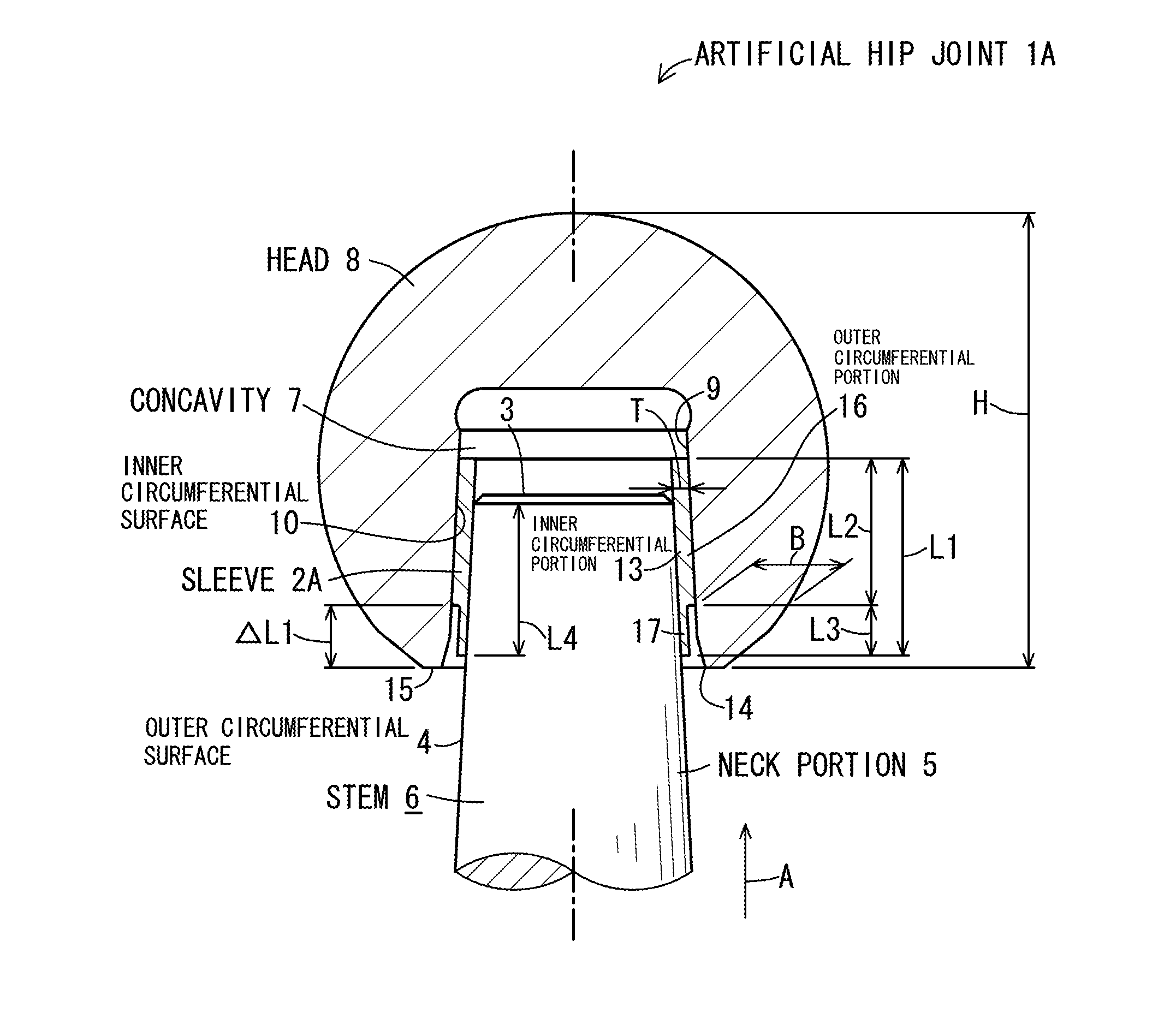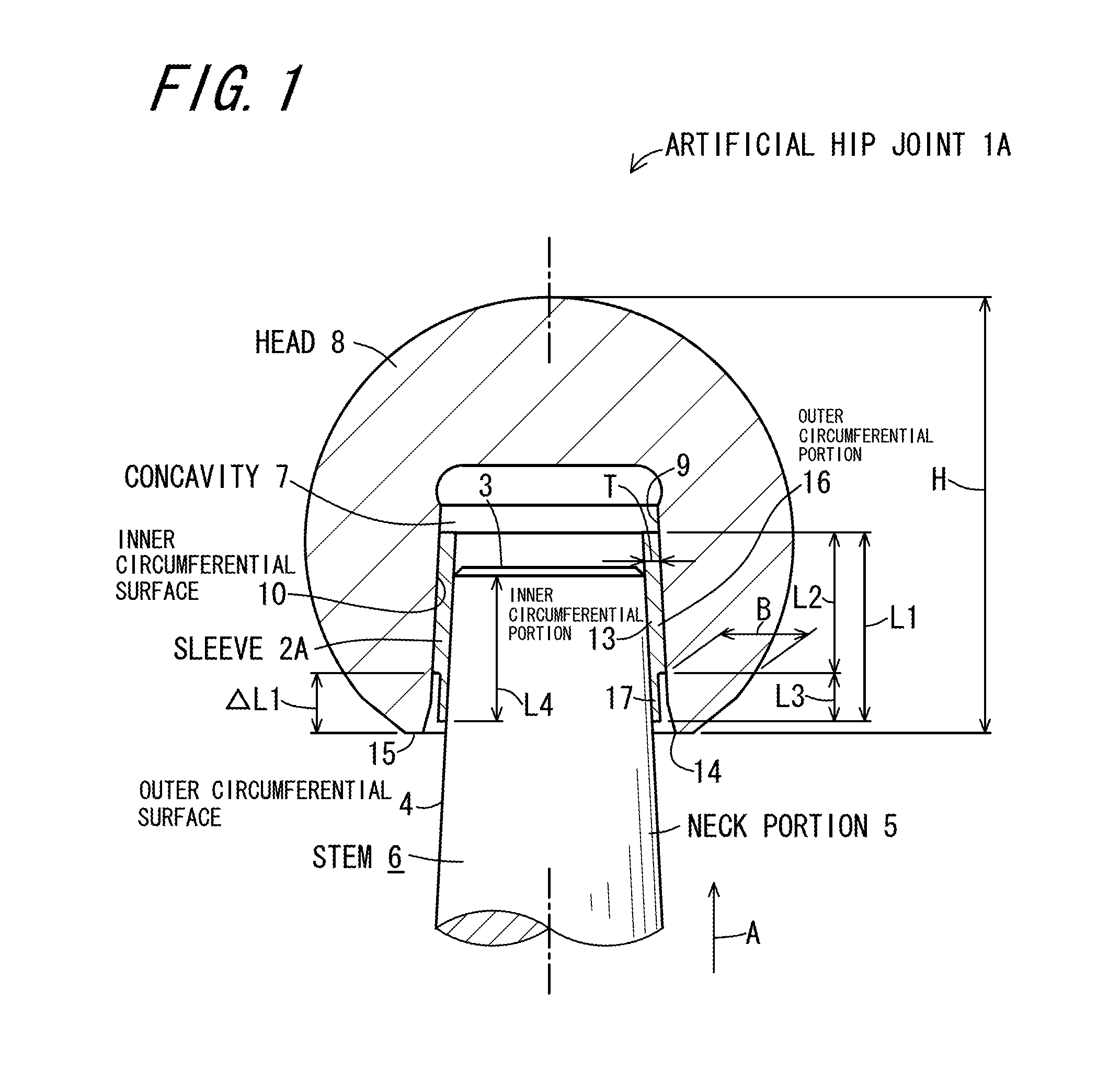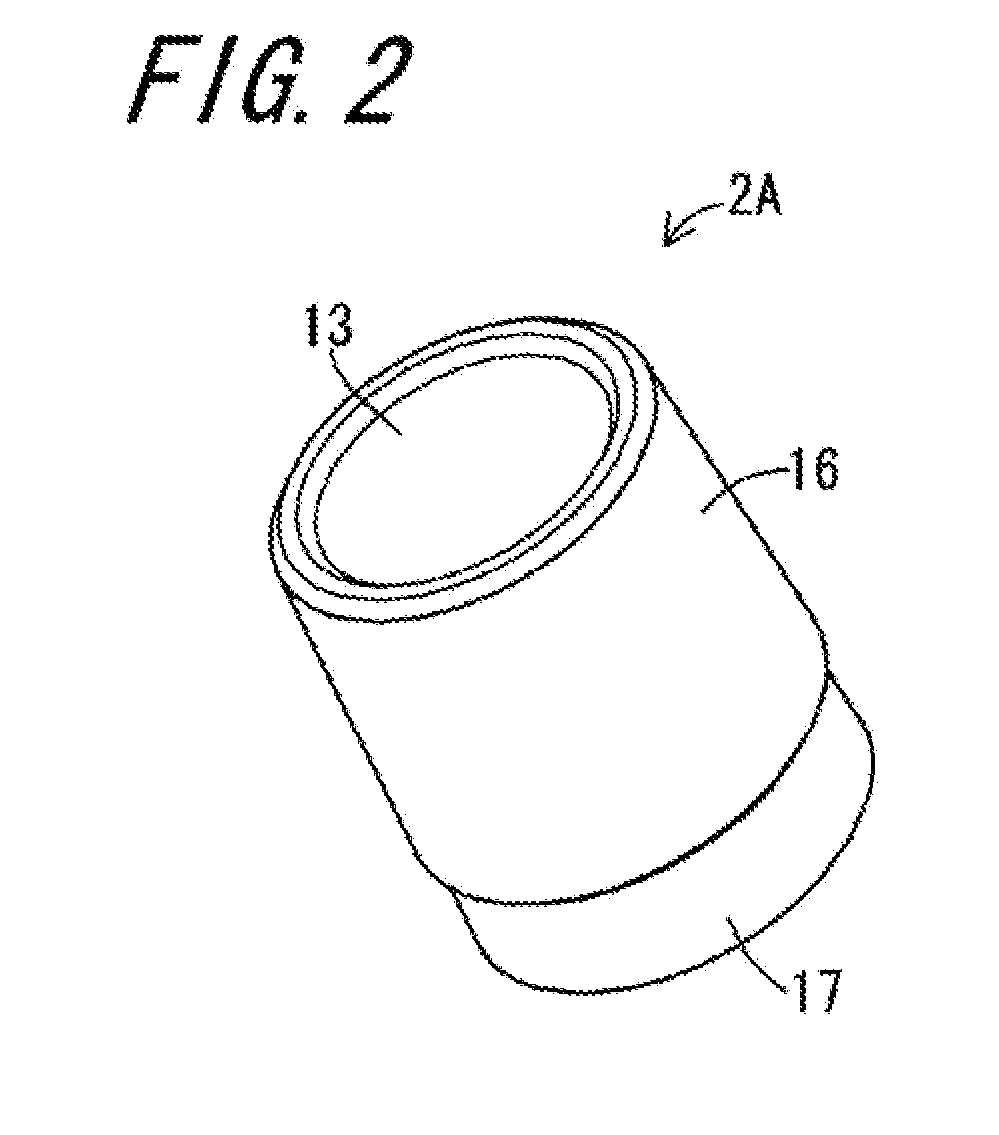Artificial hip joint
a hip joint and artificial technology, applied in hip joints, prostheses, medical science, etc., can solve the problems of inducing a rupture in the head and likely damage, and achieve the effect of reducing the stress generated in the head, ensuring the fixing strength of the head, and sufficient length
- Summary
- Abstract
- Description
- Claims
- Application Information
AI Technical Summary
Benefits of technology
Problems solved by technology
Method used
Image
Examples
embodiment 1
[0058]FIG. 1 is a cross-sectional view illustrating an artificial hip joint 1A according to Embodiment 1 of the invention, and FIG. 2 is a perspective view of a sleeve 2A which is used in the artificial hip joint 1A illustrated in FIG. 1. The artificial hip joint 1A of the present embodiment includes a stem 6, a head 8, and the sleeve 2A. The stem 6 has a neck portion 5 which has a truncated conical outer circumferential surface 4 decreased in diameter toward a tip 3 thereof. The head 8 is provided with a concavity 7 in which the neck portion 5 is inserted, and the head 8 has an inner surface 9 defining the concavity 7 which inner surface includes a truncated conical inner circumferential surface 10 decreased in diameter toward an insertion direction A of inserting the neck portion 5. The sleeve 2A is inserted between the outer circumferential surface 4 of the neck portion 5 inserted into the concavity 7, and the inner circumferential surface 10 of the head 8.
[0059]The stem 6 is mad...
example 1
Analysis Example 1
[0068]FIG. 3 is a diagram illustrating a stress analysis model of an artificial hip joint. FIG. 4 is a stress distribution diagram showing an analysis result of Example 1 simulating the artificial hip joint 1A illustrated in FIG. 1. FIG. 5 is a stress distribution diagram showing an analysis result of Comparison Example 1. FIG. 6 is a stress distribution diagram showing an analysis result of Comparison Example 2. In each diagram, the same reference numerals are assigned to portions corresponding to those of the artificial hip joint 1A in FIG. 1.
[0069]In the artificial hip joint 1A according to Embodiment 1, the inventors have carried out a stress analysis by using a finite element method (abbreviated to FEM) in order to identify the stress generated when an external force is applied to the head 8. As an analysis method, the stress analysis model illustrated in FIG. 3 is used. As an analysis target, the analysis model simulating the artificial hip joint 1A in FIG. 1...
embodiment 2
[0078]FIG. 7 is a cross-sectional view illustrating an artificial hip joint 1B according to Embodiment 2 of the invention. FIG. 8 is a perspective view of a sleeve 2B which is used in the artificial hip joint 1B. The same reference numerals are assigned to portions corresponding to those in Embodiment 1 described above.
[0079]The artificial hip joint 1B of the present embodiment, in common with Embodiment 1, includes the stem 6, the head 8, and the sleeve 2B. The stem 6 has the neck portion 5 which has the truncated conical outer circumferential surface 4 decreased in diameter toward the tip thereof. The head 8 is provided with the concavity 7 in which the neck portion 5 is inserted, and the head 8 has the inner surface defining the concavity 7 which inner surface includes the truncated conical inner circumferential surface 10 decreased in diameter toward the insertion direction of inserting the neck portion 5. The sleeve 2B is inserted between the outer circumferential surface 4 of ...
PUM
 Login to View More
Login to View More Abstract
Description
Claims
Application Information
 Login to View More
Login to View More - R&D
- Intellectual Property
- Life Sciences
- Materials
- Tech Scout
- Unparalleled Data Quality
- Higher Quality Content
- 60% Fewer Hallucinations
Browse by: Latest US Patents, China's latest patents, Technical Efficacy Thesaurus, Application Domain, Technology Topic, Popular Technical Reports.
© 2025 PatSnap. All rights reserved.Legal|Privacy policy|Modern Slavery Act Transparency Statement|Sitemap|About US| Contact US: help@patsnap.com



